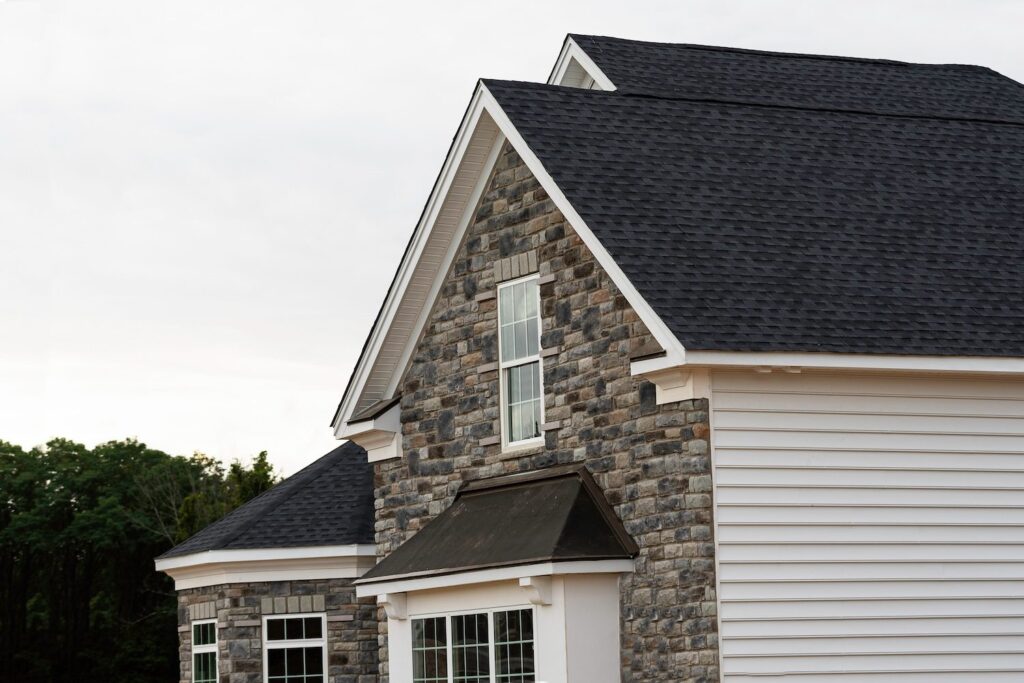Measuring your roof line might sound tricky, but it doesn’t have to involve ladders or climbing onto your roof. Whether you’re planning for repairs, estimating materials, or simply gathering information for a home project, there’s a safer way to get the job done.
With a few simple tools and techniques, you can measure your roof line accurately—all while keeping your feet firmly on the ground. This guide will walk you through everything you need to know to make the process easy, stress-free, and safe.
What Is a Roof Line?
A roofline refers to the outline or edge of your roof as it appears from the ground. It includes the visible edges where the roof meets the walls of your home, as well as the slopes, peaks, and overhangs that shape the structure. Essentially, it’s the outer profile of your roof.
Knowing your roof line is important for several reasons. It helps determine how much material is needed for projects like installing gutters, repairing shingles, or replacing roof flashing. The roof line also impacts water drainage and the overall appearance of your home, making it a critical factor in both functionality and curb appeal.
For homeowners, understanding your roof line can help with planning maintenance or upgrades without overlooking key details like overhangs or tricky angles.
Whether you’re working on a DIY project or calling in professionals, having accurate measurements ensures you can approach the job with confidence and precision.
What You’ll Need
- Measuring tape: A long measuring tape, ideally one that extends at least 25 feet, is a simple option for shorter distances.
- Laser distance measurer: This device uses lasers to calculate distances quickly and accurately, even for higher or hard-to-reach roof edges.
- Smartphone app: Apps designed for measuring can use your phone’s camera to estimate distances. While not as precise as other tools, they can provide a rough idea in seconds.
- Notepad or smartphone: You’ll need something to record your measurements for future reference.
Step-by-Step Guide to Measuring From the Ground
- Locate key points: Stand far enough back to see the edges, peaks, and slopes of your roof. Make sure to note any overhangs or irregularities that could affect your measurements.
- Measure the width: Use a measuring tape or laser distance measurer to calculate the distance between two points along the base of your roof line.
- Measure the height: If needed, measure the height of your roof by calculating the distance from the ground to the highest point of the roof line.
- Estimate the slope: To get an idea of your roof’s pitch, measure the rise and run of one section. Hold a level straight out from the side of your roof. Measure the vertical distance from the roof to the bottom of the level at a point 12 inches out. The higher the number, the steeper the roof.
- Double-check: Go over your measurements again to ensure accuracy, especially if you’re using these for project planning or material estimates.
Notable Considerations
- Overhangs and extensions: Include roof overhangs or attached structures like porches or garages in your calculations.
- Complex designs: If your roof has multiple peaks, valleys, or irregular shapes, break it into smaller sections to measure each part individually.
- Weather conditions: Choose a clear day to measure, as rain or strong winds can make the process more challenging and less accurate.
Other Recommended Maintenance
While you’re evaluating every line of your roof, it’s a good idea to check for signs of wear and tear.
Addressing small issues early can prevent costly repairs later. Here are some maintenance tips to consider:
- Look for missing or damaged shingles.
- Inspect your gutters for clogs or sagging sections.
- Check for any visible signs of water damage or leaks along the roof edges.
- Clear debris, such as leaves or branches, that may have accumulated on or near your roof.
When to Call a Professional
If your roof has a steep pitch, multiple levels, or intricate architectural details, it’s easy to miss critical measurements or overlook potential issues.
Professionals have the tools and experience to accurately measure even the most complex roof designs. They can also assess the overall condition of your roof, identifying problems like hidden leaks, damaged flashing, or structural concerns that might not be visible from the ground.
If you’re planning a major repair, installing new roofing materials, or are in need of precise measurements for insurance purposes, calling a professional ensures the job is done correctly and safely.
It’s a small investment that can save you time, money, and stress in the long run.
Conclusion
Measuring your roof line from the ground is a safe, effective way to plan for repairs, maintenance, or upgrades. With the right tools and techniques, most homeowners can confidently gather accurate measurements without ever setting foot on a ladder.
However, for roofs with complex designs, steep pitches, or potential damage, a professional inspection is the best way to ensure accuracy and uncover any hidden issues. Champia’s experienced inspectors provide detailed assessments to help you protect your home and plan projects with confidence—call today or book your inspections online.
